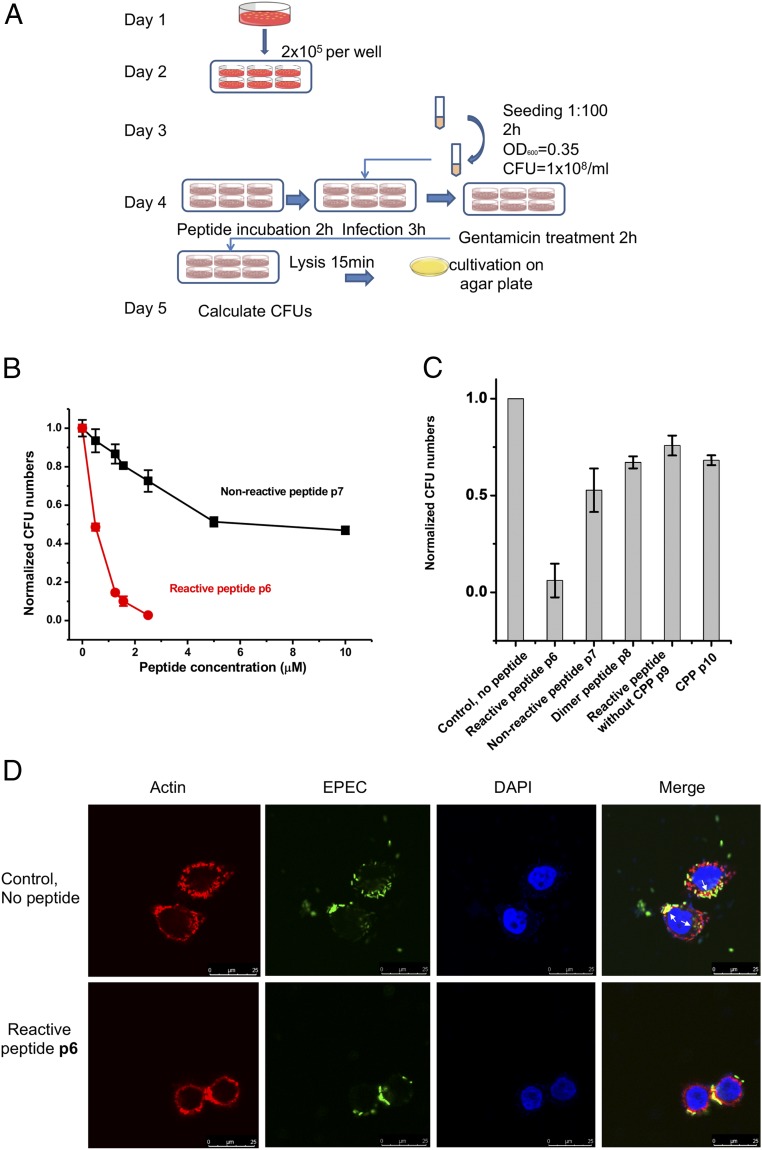Fig. 4.
Reactive peptide treatment guards Caco-2 cells against EPEC infection. (A) Experimental scheme showing the procedure for measuring bacterial infectivity on peptide treatment. (B) Comparison of the inhibitory effect of reactive peptide p6 and nonreactive peptide p7 toward EPEC infection to Caco-2 cells. (C) Comparison of the anti-EPEC effect of a set of peptides. (D) Representative images of p6-treated Caco-2 cells versus untreated Caco-2 cells in response to EPEC infection. GFP-expressing EPEC can enter Caco-2 cells without p6 (white arrows) but can attach to the surface of Caco-2 cells only in the presence of p6. Cells were stained and examined using a confocal laser scanning system (Nikon C1Si) equipped with a 60× oil objective with a 20-mW 488-nm laser. Note that gentamicin treatment was not used in this experiment.

